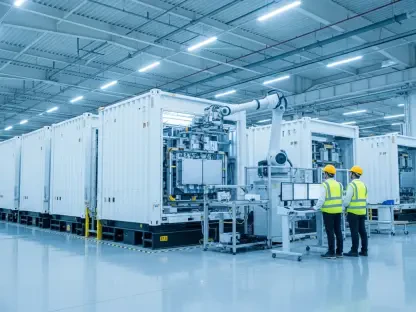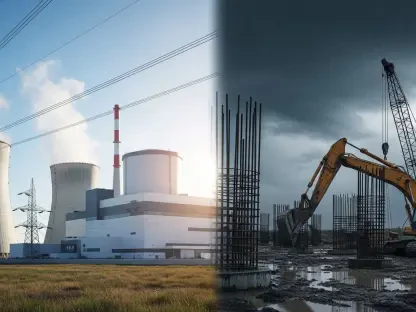The intersection of energy policy and technological innovation is becoming increasingly critical, particularly in the United States. With the rapid advancements in clean energy technologies and the growing demands from sectors like data centers, there is an urgent need to re-evaluate and update existing regulatory frameworks. As gigantic hyperscale data centers and AI technologies consume vast amounts of electricity, the stress on both regulatory bodies and energy providers to innovate and adapt is unprecedented. This article explores the historical context, current challenges, and potential solutions for aligning energy regulations with technological progress, underscoring the necessity for agile and forward-thinking policies that can keep pace with evolving market demands.
Historical Context of Energy Regulation
In the 1970s, the Public Utility Regulatory Policies Act (PURPA) marked a significant shift in the U.S. energy market by breaking the monopolistic control of vertically integrated utilities. This landmark legislation introduced competition through independent power producers (IPPs), enabling a diverse range of energy sources to enter a market previously dominated by a few utility giants. By dismantling the monopolistic structure, PURPA created an environment conducive to innovation and competition, catalyzing significant progress in the energy sector. Over the past 25 years, the substantial reduction in costs for solar panels and batteries has further fueled the growth of the clean energy sector, making renewable energy an increasingly viable and attractive option.
The Energy Policy Act of 1992 took these reforms a step further by democratizing access to the grid for IPPs and fostering a market-based energy system. This legislation facilitated the establishment of independent system operators (ISOs) by the Federal Energy Regulatory Commission (FERC), which were crucial in ensuring fair access to grid transmissions and addressing market issues. The ISOs played a particularly vital role in maintaining transparency and fairness in the market, thereby bolstering investor confidence and fostering industry growth. These legislative milestones collectively paved the way for significant advancements in the U.S. energy market, laying a robust foundation for future developments.
Current Challenges in Energy Regulation
Despite the successes of past legislation, the current regulatory framework struggles to keep pace with technological advancements and increasing demand for clean energy. Hyperscalers like Google and Amazon Web Services face significant regulatory hurdles that impede their growth and energy needs, underscoring the growing tension between regulatory constraints and corporate energy demands. Challenges such as Berkshire Hathaway Energy bypassing West Virginia’s regulatory processes highlight the lengths to which some entities must go to secure the energy they need. These actions underscore the inadequacies of the current regulatory system to adapt to modern demands.
Data centers powering AI technologies require vast amounts of clean energy, a necessity that current regulations find challenging to meet. Such centers not only demand reliable power but also seek sustainable energy sources to align with increasingly stringent corporate social responsibility goals. Without timely regulatory reforms that address these complex needs, the deployment of advanced energy solutions remains stunted. The urgency for updated policies is clear—regulations must evolve to accommodate these modern energy demands and facilitate continued technological progress without undue constraint. Such enhancements are essential to maintaining economic competitiveness and ensuring sustainable growth in the energy sector.
Potential Solutions for Regulatory Evolution
One innovative solution to the current regulatory bottlenecks is the concept of independent power networks (IPNs). These networks could alleviate demand pressures by creating localized yet interconnected power supplies. By supporting both individual sites and the national grid, IPNs would foster more resilient and self-sufficient energy ecosystems. They represent a promising framework for streamlining energy supply and demand, making it possible to address the specific energy needs of hyperscale data centers and other power-intensive operations more efficiently. Localized power solutions could significantly enhance energy security and reliability, providing a robust buffer against grid vulnerabilities.
To unlock the full potential of these innovative solutions, immediate regulatory reforms are essential. Updating policies to match the advancements in clean energy technologies will enable more efficient and effective energy systems. Such proactive policy-making is crucial for sustaining growth and meeting future energy requirements. Legislative efforts must focus on creating a regulatory environment that is flexible, adaptable, and conducive to innovation. By fostering this kind of forward-thinking regulatory landscape, policymakers can support the sustainable evolution of the energy sector, ensuring it can meet the demands of a rapidly advancing technological world.
The Need for Proactive Policy-Making
The intersection of energy policy and technological innovation is growing ever more crucial, particularly in the U.S. Rapid advancements in clean energy technologies and increasing demands from sectors such as data centers necessitate a re-evaluation and modernization of current regulatory frameworks. Gigantic hyperscale data centers and AI technologies are consuming vast amounts of electricity, creating unprecedented stress on regulatory bodies and energy providers to innovate and adapt. This article delves into the historical context, current challenges, and potential solutions for harmonizing energy regulations with technological advancements. It highlights the urgent need for flexible and forward-thinking policies that can keep pace with evolving market demands, ensuring a sustainable and efficient energy future. Adapting to these demands will be critical for maintaining a balance between robust technological growth and sustainable energy practices while meeting the increasing energy consumption needs of modern technologies.









